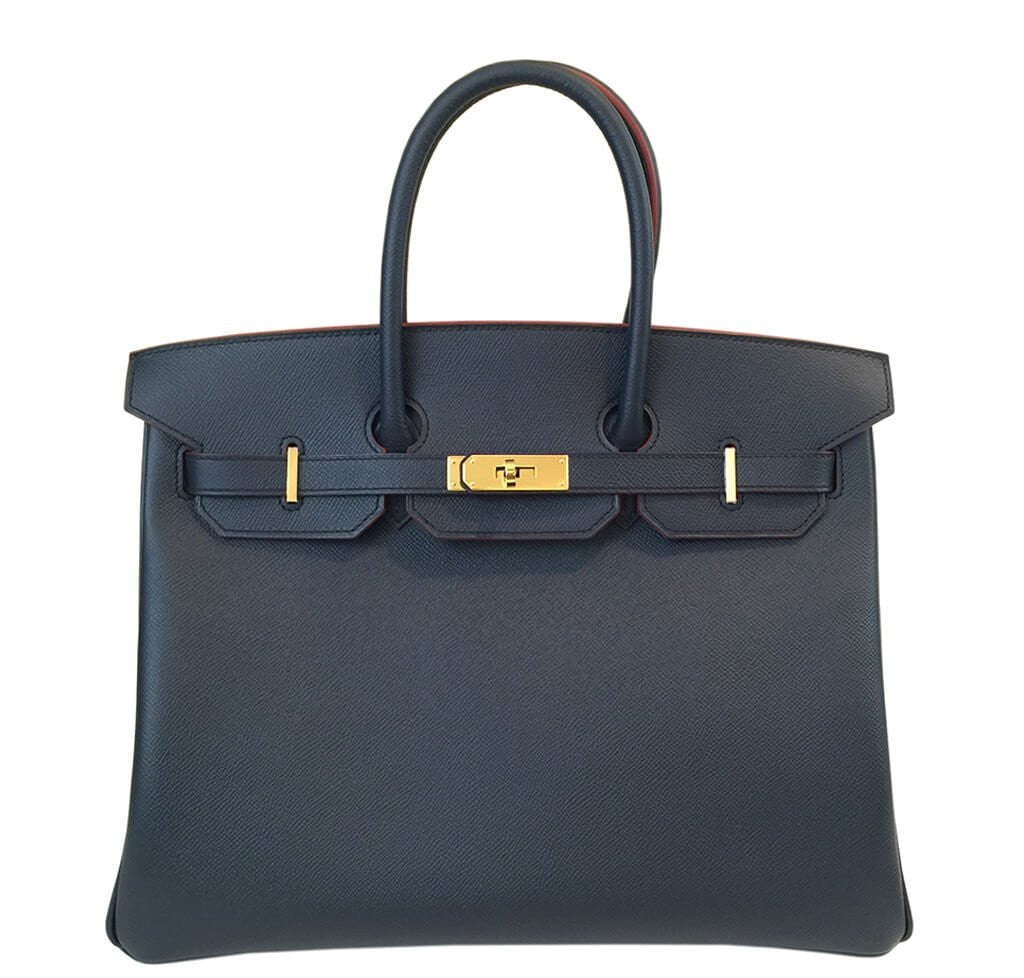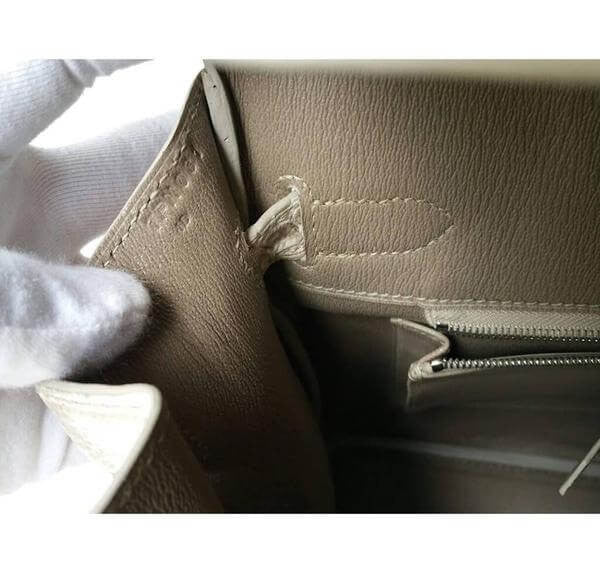How Hermès Bags are Made

Hermès bags are carefully crafted pieces of art. They have a steep price tag because they are made from premium materials and every stitch is placed with the utmost precision. The creation process for each Hermès bag takes numerous hours since all bags are handcrafted.
 The bag makers who craft these bags are carefully screened and require years of high quality experience before even being considered for the job. Hermès has a reputation of hiring mostly artisans who have graduated from the École Grégoire-Ferrandi; a school that specializes in working with luxurious leathers.
The bag makers who craft these bags are carefully screened and require years of high quality experience before even being considered for the job. Hermès has a reputation of hiring mostly artisans who have graduated from the École Grégoire-Ferrandi; a school that specializes in working with luxurious leathers.
Here are the steps that go into making a Birkin or Kelly handbag:
1. Cutting the leather or skin
Preparing the skin is the first step towards crafting a breathtaking bag. The leather or skin is first examined for any defects. All defects are marked with a white marker and are then removed. This is a tedious process that can take a couple of hours to complete. Mosquito bites and wounds on the animal become apparent once the skin has been tanned, making this an incredibly important step.
Once the skin has been fully examined it gets cut, again using extreme caution. The amount of skin required depends on the size of the bag and depending on the type of skin, it can require skins from numerous animals. For instance, a lizard skin handbag requires four to five lizard skins for just one bag.
2. Stitching the bag
Stitching a Hermès b ag requires a unique process called “The Saddle Stitch”. This type of stitch is used since it doesn’t unravel when done properly. Since Hermès only hires proven expert artisans who have years of experience, the stitching is always done with complete perfection. The linen used for Hermès bags is waterproof, smooth to the touch and has rot prevention due to the beeswax coating. Most Hermès bags are created with same-color threads, but some rare bags have white threads even if the bag is not white.
ag requires a unique process called “The Saddle Stitch”. This type of stitch is used since it doesn’t unravel when done properly. Since Hermès only hires proven expert artisans who have years of experience, the stitching is always done with complete perfection. The linen used for Hermès bags is waterproof, smooth to the touch and has rot prevention due to the beeswax coating. Most Hermès bags are created with same-color threads, but some rare bags have white threads even if the bag is not white.
The skin is held together using a wooden clamp, while the artisan performs each stitch with precision. The amazing thing about the saddle stitch is that each stitch is created so that if one stitch were to come loose, the rest of the stitches would not be affected.
3. Creating a uniform look
 Once the stitching process is complete, the artisan then taps the seam with a hammer. This allows the seam to be less apparent. After tapping the seam with a hammer, the seam is then shaved, sanded and waxed. Ultimately, this provides a uniform look that makes it appear as though both leathers are the same.
Once the stitching process is complete, the artisan then taps the seam with a hammer. This allows the seam to be less apparent. After tapping the seam with a hammer, the seam is then shaved, sanded and waxed. Ultimately, this provides a uniform look that makes it appear as though both leathers are the same.
4. Creating the handle
Making the handle is a tedious process, which can take up to four hours. The handle is made from the exact same type of leather, but contains several layers of it. Most handles are made using 4 – 5 layers of leather. The artisan uses his thigh to create the form of the handle and then places it on the bag with extreme precision.
5. Placing the hardware
The hardware is then added to the bag. Unlike other bags, the hardware is actually attached using the unique Hermès process called “Pearling” rather than by using screws. They use this process because traditional screws can loosen with time; the pearling process keeps the hardware in place forever.
Some artisans prefer placing the hardware before stitching the bag. Once the hardware has been added, a clear plastic film is placed over it in order to prevent the metal from getting scratched or damaged. This film often remains on the hardware until the bag is delivered to the person who purchases it.
6. Inspecting the bag
Once a Hermès bag is complete, the inspection process is thorough. A workshop inspector will go over every little detail of the bag in order to ensure that it’s up to Hermès standards. If the bag passes the initial inspection, it gets stamped. The stamp allows Hermès to identify the artisan who made the bag, the workshop where it was created and the year.
From there, the bag  gets sent to the Hermès logistics department in the town of Bobigny. This is where the final inspection will occur. The inspection process in Bobigny is just as thorough and goes over every little detail. If the bag passes this final inspection, it gets packed in the signature orange box and sent out to one of the Hermès boutiques around the world.
gets sent to the Hermès logistics department in the town of Bobigny. This is where the final inspection will occur. The inspection process in Bobigny is just as thorough and goes over every little detail. If the bag passes this final inspection, it gets packed in the signature orange box and sent out to one of the Hermès boutiques around the world.
If any imperfect bags are found, they are normally destroyed. Hermès does not risk having an imperfect bag on the streets.











